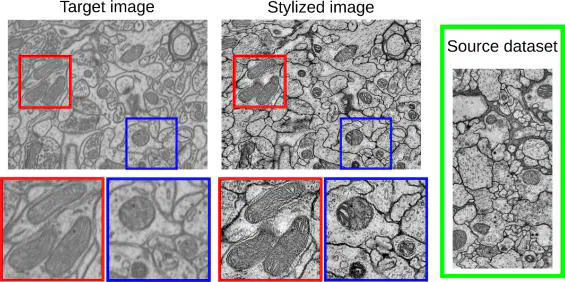Deep learning based domain adaptation for mitochondria segmentation on EM volumes

Abstract
Background and Objective: Accurate segmentation of electron microscopy (EM) volumes of the brain is essential to characterize neuronal structures at a cell or organelle level. While supervised deep learning methods have led to major breakthroughs in that direction during the past years, they usually require large amounts of annotated data to be trained, and perform poorly on other data acquired under similar experimental and imaging conditions. This is a problem known as domain adaptation, since models that learned from a sample distribution (or source domain) struggle to maintain their performance on samples extracted from a different distribution or target domain. In this work, we address the complex case of deep learning based domain adaptation for mitochondria segmentation across EM datasets from different tissues and species. Methods: We present three unsupervised domain adaptation strategies to improve mitochondria segmentation in the target domain based on (1) state-of-the-art style transfer between images of both domains; (2) self-supervised learning to pre-train a model using unlabeled source and target images, and then fine-tune it only with the source labels; and (3) multi-task neural network architectures trained end-to-end with both labeled and unlabeled images. Additionally, to ensure good generalization in our models, we propose a new training stopping criterion based on morphological priors obtained exclusively in the source domain. The code and its documentation are publicly available at https://github.com/danifranco/EM_domain_adaptation. Results: We carried out all possible cross-dataset experiments using three publicly available EM datasets. We evaluated our proposed strategies and those of others based on the mitochondria semantic labels predicted on the target datasets. Conclusions: The methods introduced here outperform the baseline methods and compare favorably to the state of the art. In the absence of validation labels, monitoring our proposed morphology-based metric is an intuitive and effective way to stop the training process and select in average optimal models.